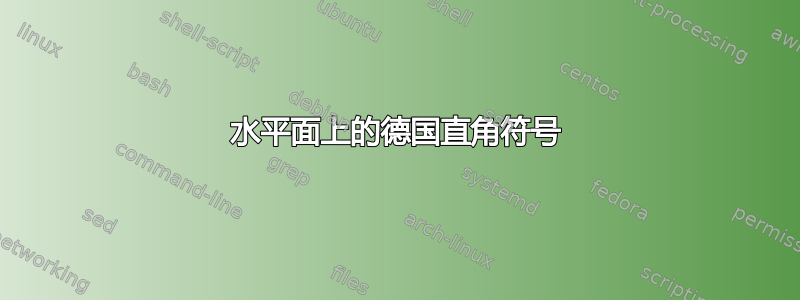
我在纸飞机上假装了一个实体,但是这里
\documentclass[12pt,a4paper]{article}
\usepackage[utf8]{inputenc}
\usepackage[T1]{fontenc}
\usepackage[ngerman]{babel}
\usepackage[left=2.00cm, right=3.00cm, top=1.00cm, bottom=1.00cm]{geometry}
\usepackage{tikz}
\usetikzlibrary{angles, calc}
\begin{document}
\begin{tikzpicture}[thick]
\def \l{ 6.0 } % Defines the width of the parallelepiped
\def \d{ 5.0 } % Defines the depth of the parallelepiped
\def \h{ 7.0 } % Defines the heigth of the parallelepiped
\def \s{ 3.0 } % Defines the shift from the parallelepiped to the edge of the trapezoid
\coordinate (A) at (0,0);
\coordinate (B) at (\l,0);
\coordinate (C) at ({\l+\d/(2*sqrt(2))},{\d/(2*sqrt(2))});
\coordinate (D) at ({\d/(2*sqrt(2))},{\d/(2*sqrt(2))});
\draw (A) -- node[midway, below] {$a$} (B);
\draw[dashed, thin] (B) -- node[midway, right=2pt] {$b$} (C);
\draw[dashed] (C) -- node[midway, below] {$c$} (D) -- node[midway, left=2pt] {$d$} (A);
\coordinate (E) at (0,\h);
\coordinate (F) at (\l,\h);
\coordinate (G) at ({\l+\d/(2*sqrt(2))},{\h+\d/(2*sqrt(2))});
\coordinate (H) at ({\d/(2*sqrt(2))},{\h+\d/(2*sqrt(2))});
\coordinate (I) at ({\s+\l+\d/(2*sqrt(2))},{\d/(2*sqrt(2))});
\coordinate (J) at ({\s+\l+\d/(2*sqrt(2))},{\h+\d/(2*sqrt(2))});
\draw (E) -- node[midway, below] {$i$} (F) -- node[midway, below right=2pt] {$p$} (J) -- node[pos=0.2, below] {$o$} node[pos=0.65, below] {$k$} (H) -- node[midway, left=2pt] {$l$} cycle;
\draw[thin] (F) -- node[midway, right=2pt] {$j$} (G);
\draw (A) -- node[midway, left=2pt] {$e$} (E) (B) -- node[midway, left=2pt] {$f$} (F);
\draw[dashed, thin] (C) -- node[pos=0.3, left=2pt] {$g$} (G);
\draw[dashed] (D) -- node[pos=0.3, left=2pt] {$h$} (H);
\draw[dashed] (C) -- node[midway, below] {$m$} (I);
\draw (I) -- node[midway, below right=2pt] {$n$} (B);
\draw (I) -- node[pos=0.3, right=2pt] {$q$} (J);
\draw pic[pic text=$\cdot$, draw, angle radius=10pt] {angle=B--C--I};
\end{tikzpicture}
\end{document}
(德语)直角符号看起来不像属于水平面。嗯,那是因为它在纸平面上不是直角。但它在水平面上。之前已经回答过如何使用方形符号来做到这一点,但我该如何使用这个圆形符号“修复”它?
答案1
您可以使用\usepackage{tikz-3dplot}
\documentclass[12pt,a4paper]{article}
\usepackage[utf8]{inputenc}
\usepackage[T1]{fontenc}
\usepackage[ngerman]{babel}
\usepackage[left=2.00cm, right=3.00cm, top=1.00cm, bottom=1.00cm]{geometry}
\usepackage{tikz}
\usepackage{tikz-3dplot}
\usetikzlibrary{angles, calc}
\begin{document}
\tdplotsetmaincoords{70}{60}
\begin{tikzpicture}[tdplot_main_coords,line join = round]
\def \l{ 6.0 } % Defines the width of the parallelepiped
\def \d{ 5.0 } % Defines the depth of the parallelepiped
\def \h{ 7.0 } % Defines the heigth of the parallelepiped
\def \s{ 3.0 } % Defines the shift from the parallelepiped to the edge of the trapezoid
\coordinate (A) at (0,0,0);
\coordinate (B) at (\l,0,0);
\coordinate (C) at ({\l+\d/(2*sqrt(2))},{\d/(2*sqrt(2))},0);
\coordinate (D) at ({\d/(2*sqrt(2))},{\d/(2*sqrt(2))},0);
\draw (A) -- node[midway, below] {$a$} (B);
\draw[dashed, thin] (B) -- node[midway, right=2pt] {$b$} (C);
\draw[dashed] (C) -- node[midway, below] {$c$} (D) -- node[midway, left=2pt] {$d$} (A);
\coordinate (E) at (0,0,\h);
\coordinate (F) at (\l,0,\h);
\coordinate (G) at ({\l+\d/(2*sqrt(2))},{\d/(2*sqrt(2))},\h);
\coordinate (H) at ({\d/(2*sqrt(2))},{\d/(2*sqrt(2))},\h);
\coordinate (I) at ({\s+\l+\d/(2*sqrt(2))},{\d/(2*sqrt(2))},0);
\coordinate (J) at ({\s+\l+\d/(2*sqrt(2))},{\d/(2*sqrt(2))},\h);
\draw (E) -- node[midway, below] {$i$} (F) -- node[midway, below right=2pt] {$p$} (J) -- node[pos=0.2, below] {$o$} node[pos=0.65, below] {$k$} (H) -- node[midway, left=2pt] {$l$} cycle;
\draw[thin] (F) -- node[midway, right=2pt] {$j$} (G);
\draw (A) -- node[midway, left=2pt] {$e$} (E) (B) -- node[midway, left=2pt] {$f$} (F);
\draw[dashed, thin] (C) -- node[pos=0.3, left=2pt] {$g$} (G);
\draw[dashed] (D) -- node[pos=0.3, left=2pt] {$h$} (H);
\draw[dashed] (C) -- node[midway, below] {$m$} (I);
\draw (I) -- node[midway, below right=2pt] {$n$} (B);
\draw (I) -- node[pos=0.3, right=2pt] {$q$} (J);
\draw pic[pic text=$\cdot$, draw, angle radius=10pt] {angle=B--C--I};
\end{tikzpicture}
\结束{文档}



